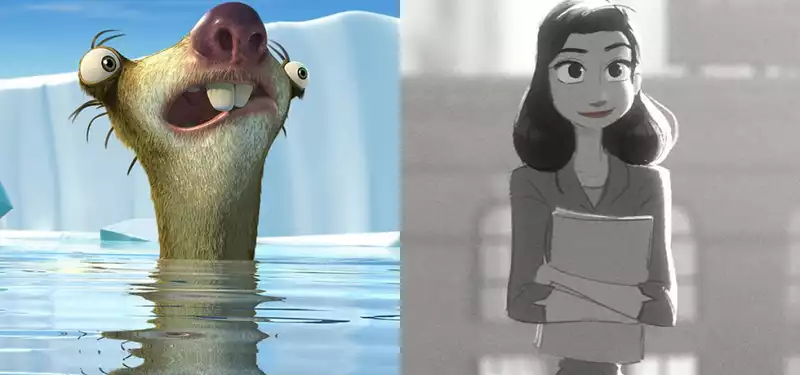Jan 4, 2017
Among the winners of the Blue Sky, ILM, Sony Image Works, Weta Digital, Disney 18Sci-Tech Academy Awards
If there was any doubt about the integral role that cgi and vfx technologies play in the creation of Hollywood filmmaking nowadays, just take a look at the Academy Award winners for this year's scientific and technical achievements.
The 18 scientific and technical certificates and plaques, representing 34 individual recipients and five organizations, were announced today by the Academy. (Unlike other Academy Awards, these awards need not have been developed or introduced during 2016; rather, the achievements must demonstrate a proven record of contributing significant value to the process of making motion pictures.)
While some of the awards are related to camera systems and audio recording, a significant number of them belong to the fields of visual effects, rendering, and animation production. Blue Sky, whose films are among the most exquisitely rendered of any animation studio, is receiving recognition for its in-house rendering software, CGI Studio. Two of the three award recipients-Carl Ludwig and Eugene Troubetzkoy-are also co-founders of the Ice Age studio, which is now owned by Fox. Meanwhile, Disney's Brian Whited is getting credit for his development of the Meander program, a hybrid vector/raster-based drawing and animation system that was first deployed on Paperman, and most recently on the short Inner Workings.
Other vfx-related honors include the development of expression-based facial performance-capture technology at Sony Pictures Imageworks, animation rig-based facial performance-capture systems at ImageMovers Digital and Digital Domain, facial performance-capture solving systems at ILM and Weta Digital, and the Arnold and V-Ray rendering technologies.
“This year we are particularly pleased to be able to honor not only a wide range of new technologies, but also the pioneering digital cinema cameras that helped facilitate the widespread conversion to electronic image capture for motion picture production,” said Ray Feeney, the Academy's chair of the Scientific and Technical Awards Committee. “With their outstanding, innovative work, these technologists, engineers and inventors have significantly expanded filmmakers' creative choices for moving image storytelling.”
The Academy will honor the recipients at annual Scientific and Technical Awards Presentation on Saturday, February 11, 2017 at the Beverly Wilshire in Los Angeles. Below is the full list of this year's Academy Award recipients for scientific and technical achievement:
To Thomson Grass Valley for the design and engineering of the pioneering Viper FilmStream digital camera system.
To Larry Gritz for the design, implementation and dissemination of Open Shading Language (OSL).
To Carl Ludwig, Eugene Troubetzkoy, and Maurice van Swaaij for the pioneering development of the CGI Studio renderer at Blue Sky Studios.
To Brian Whited for the design and development of the Meander drawing system at Walt Disney Animation Studios.
To Mark Rappaport for the concept, design and development, to Scott Oshita for the motion analysis and CAD design, to Jeff Cruts for the development of the faux-hair finish techniques, and to Todd Minobe for the character articulation and drive-train mechanisms, of the Creature Effects Animatronic Horse Puppet.
To Glenn Sanders and Howard Stark for the design and engineering of the Zaxcom Digital Wireless Microphone System.
To David Thomas, Lawrence E. Fisher, and David Bundy for the design, development and engineering of the Lectrosonics Digital Hybrid Wireless Microphone System.
To Parag Havaldar for the development of expression-based facial performance-capture technology at Sony Pictures Imageworks.
To Nicholas Apostoloff and Geoff Wedig for the design and development of animation rig-based facial performance-capture systems at Imagemovers Digital and Digital Domain.
To Kiran Bhat, Michael Koperwas, Brian Cantwell, and Paige Warner for the design and development of the ILM facial performance-capture solving system.
To ARRI for the pioneering design and engineering of the Super 35 format Alexa digital camera system.
To RED Digital Cinema for the pioneering design and evolution of the RED Epic digital cinema cameras with upgradeable full-frame image sensors.
To Sony for the development of the F65 CineAlta camera with its pioneering high-resolution imaging sensor, excellent dynamic range, and full 4K output.
To Panavision and Sony for the conception and development of the groundbreaking Genesis digital motion picture camera.
To Marcos Fajardo for the creative vision and original implementation of the Arnold Renderer, and to Chris Kulla, Alan King, Thiago Ize, and Clifford Stein for their highly optimized geometry engine and novel ray-tracing algorithms which unify the rendering of curves, surfaces, volumetrics and subsurface scattering as developed at Sony Pictures Imageworks and Solid Angle SL.
To Vladimir Koylazov for the original concept, design and implementation of V-Ray from Chaos Group.
To Luca Fascione, J.P. Lewis, and Iain Matthews for the design, engineering, and development of the FACETS facial performance capture and solving system at Weta Digital.
To Steven Rosenbluth, Joshua Barratt, Robert Nolty, and Archie Te for the engineering and development of the Concept Overdrive motion control system.




Post your comment